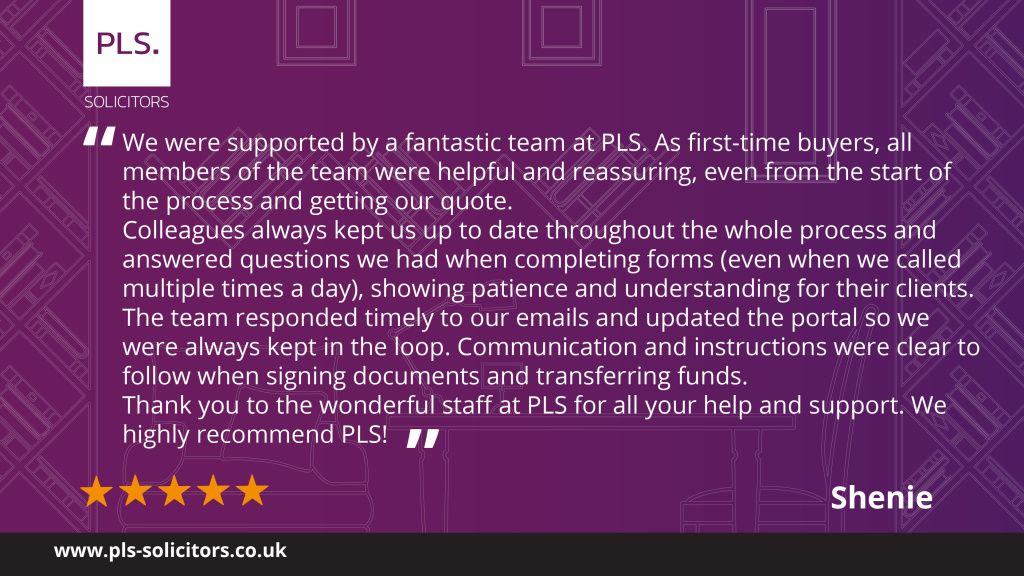Selling a relative’s home can be an emotional and complex process. With both practical and personal considerations to manage, it’s essential to approach each step with care to avoid overwhelm. PLS Solicitors have written this free no-nonsense guide, to outline the fundamental steps of settling your family member’s estate and meeting all legal and financial obligations.
To assist you further, the UK Government has published this extensive guide. Within it you will find everything you need to do up to the points listed below, including the “Tell Us Once” service, which will notify all government organisations of your bereavement. With support from conveyancing solicitors like us, you can simplify the journey and ensure a respectful, lawful handling of your loved one’s estate.
1. Obtain Probate or Letters Of Administration: If your relative left a will, the executor named in the document must apply for probate from the UK Government. In cases where no will exists, a family member may apply for letters of administration instead. You may have already completed this, but if you haven’t, this step is required for property sale. Probate or letters of administration provide the legal authority for the executor or administrator to manage all assets, including property.
2. Seek Professional Estate Management Support: Managing the estate of a deceased person involves numerous legal, tax, and procedural obligations. Conveyancing specialists like PLS Solicitors handle these responsibilities, including the full legal process of selling a property. Hiring a conveyancer is standard practice for executors and administrators, and we offer straightforward, compassionate guidance to support you through each stage.
3. Assess Selling Costs And Potential Taxes: The sale of a property includes costs such as estate agent fees, possible inheritance tax, and legal fees. With the help of your chosen legal representative, you can estimate the total financial impact and anticipate the proceeds from the property’s sale.
4. Transfer The Property Deeds: The property deeds must be transferred from your relative’s name to the executor’s. A conveyancing solicitor will manage this transfer, ensuring all legal requirements are met. If multiple beneficiaries are involved, we can provide options for co-ownership or sole ownership according to their wishes.
5. Arrange For A Valuation And Market The Property: Most estate agents offer free property valuations to establish an accurate asking price. Once the property is valued, marketing can commence, either through an estate agent or online listings.
6. Draft And Sign The Contracts: When a buyer is secured, your conveyancing solicitor will draft a contract specifying the sale’s terms, address any buyer inquiries, and negotiate terms. PLS Solicitors will oversee the contract formalities, ensuring both parties reach agreement and that all legal documents meet the requirements for property sale.
7. Complete The Sale And Transfer Property Deeds: Upon agreement of all terms, the final transfer of ownership takes place. Your conveyancing solicitor will handle the deed transfer and finalise all paperwork. If the sale is urgent, PLS Solicitors can expedite the transaction on your behalf.
You Don’t Have To Face This Alone
There will be people around you right now who have likely already been through the same thing as you, and there are also companies dedicated to making the legal-side easier. At PLS Solicitors, we have helped thousands of bereaved people manage their estates and get the best result for their families in difficult circumstances.
For more information or to schedule a no-obligation consultation call, contact PLS Solicitors, Monday – Saturday (office hours) on 03300 565 423 or complete one of our online enquiry forms and we will get in touch with you.


